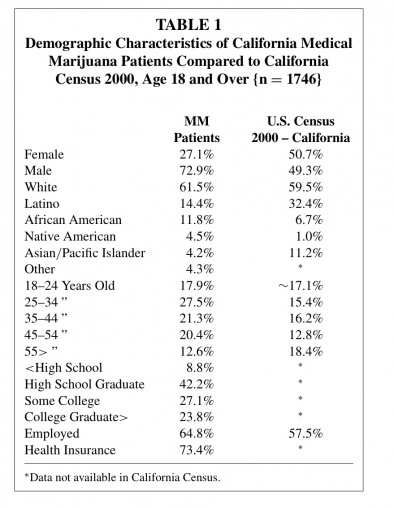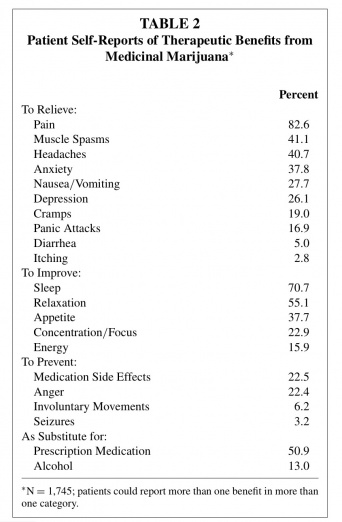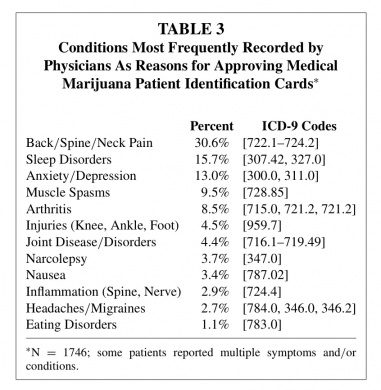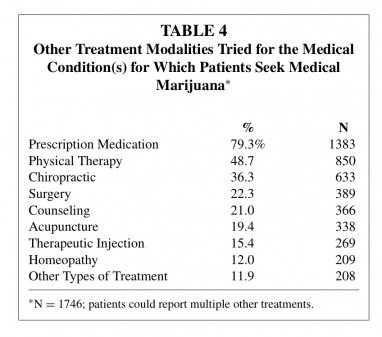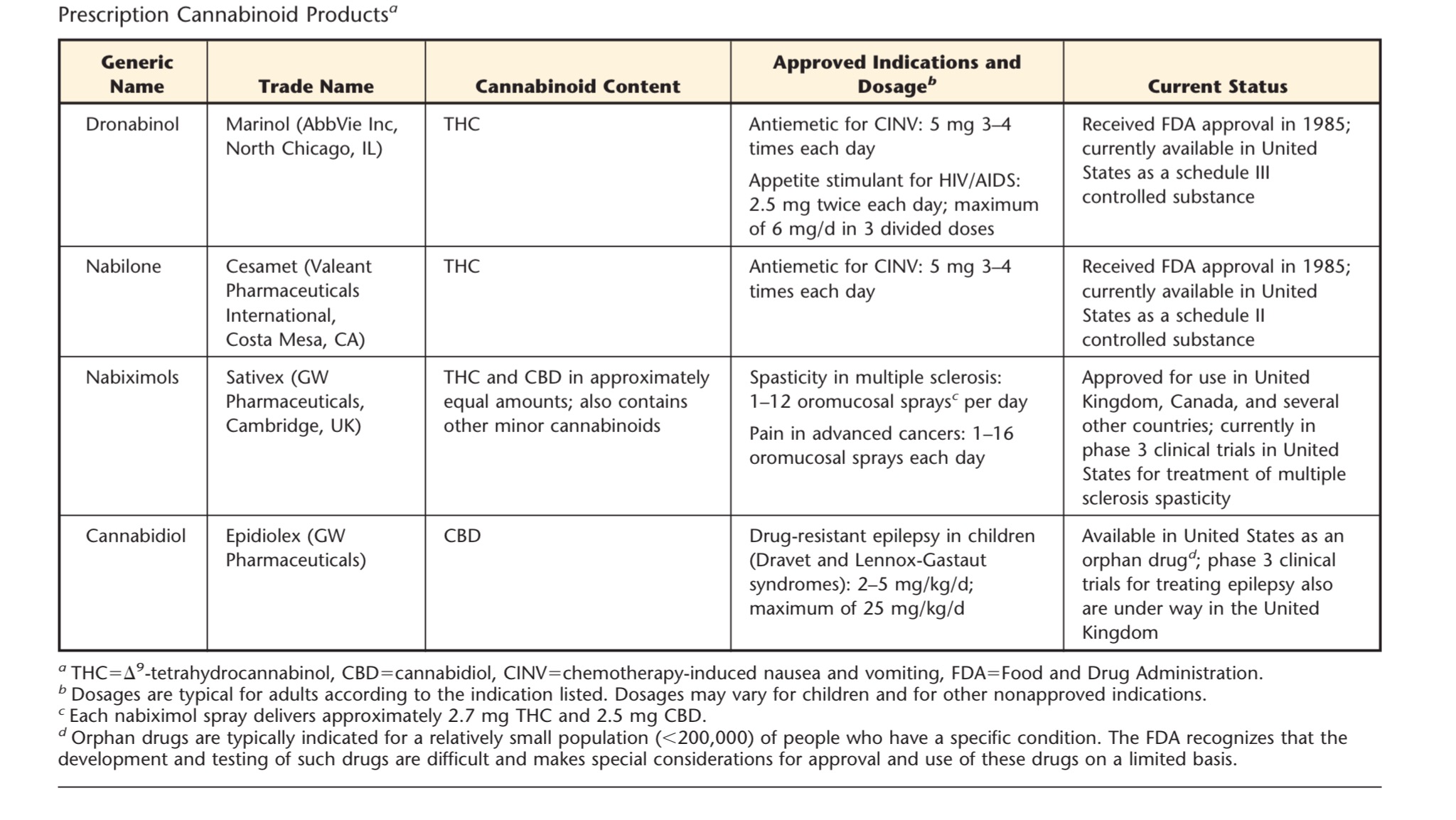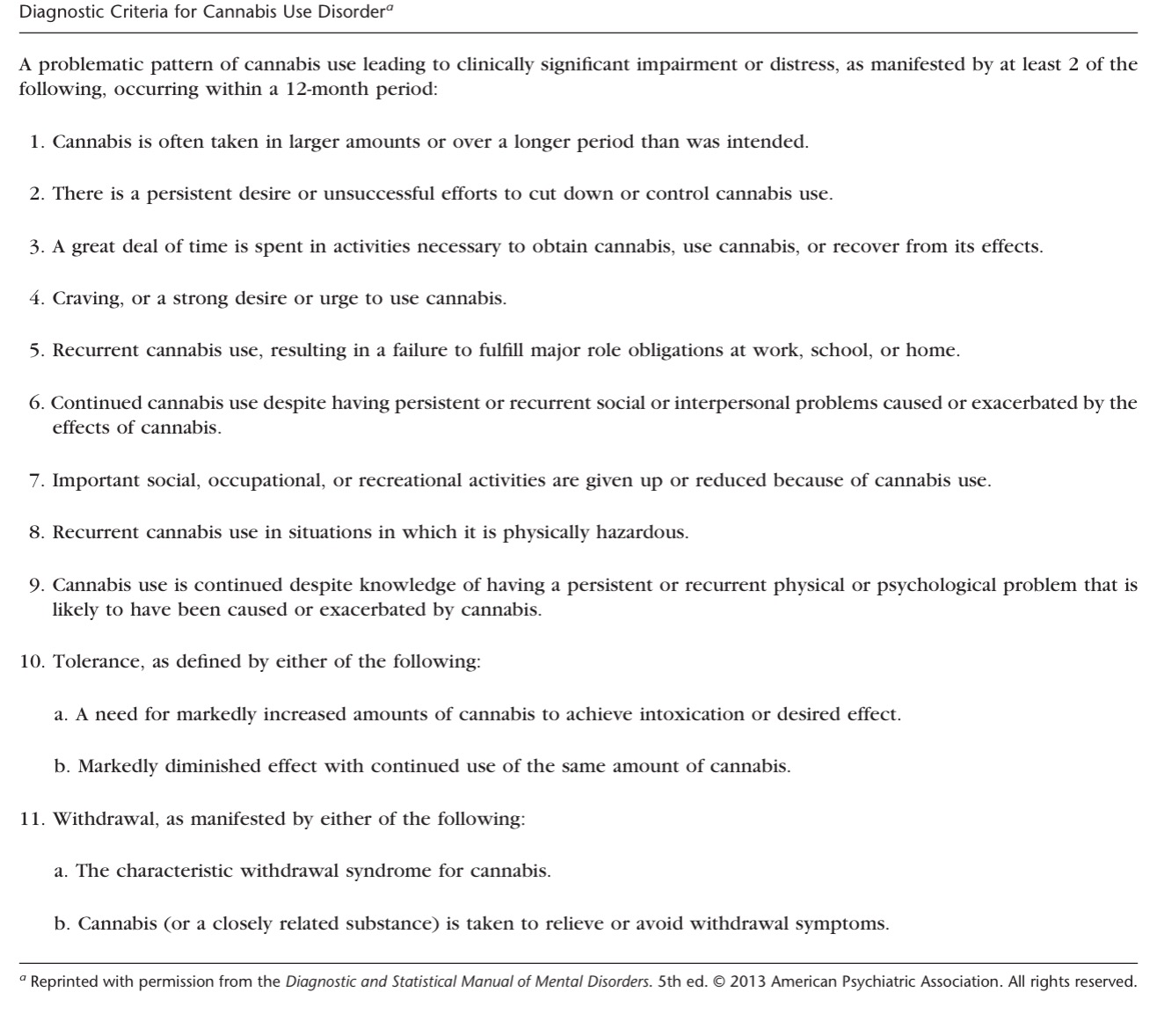Medical Cannabis
Original Editors -Mark Wojda from Bellarmine University's Pathophysiology of Complex Patient Problems project.
Top Contributors - Ryan Scinta, Lucinda hampton, Elaine Lonnemann, Kim Jackson, Ryan Barry, WikiSysop, Mark Wojda and Joseph Ayotunde Aderonmu
Definition/Description:[edit | edit source]
As a result of cannabis decriminalization and legalization throughout the world, healthcare professionals are faced with more questions from patients regarding cannabis and its use. Healthcare professionals have a responsibility to provide evidence-based guidance on this important medical and social issue. Cannabis has significant health benefits and therapeutic applications to a vast array of medical conditions explored in this page. As with any medical substance, cannabis use also presents with associated risks. This page describes the many uses of cannabis in relation to specific patient populations. The purpose of this page is to provide a comprehensive, up-to-date educational resource for healthcare professionals, patients, and caregivers guided by current evidence-based research. Additionally, the information presented will attempt to dispel many myths and help clear the smoke around issues surrounding the cannabis plant. This page will be updated continually in the future. This page is dedicated to past and future patients.
Cannabis is classified as a member of the cannabaceae plant family. Cannabis is classified under the single species of hemp (C. sativa). The female version of hemp is considered “marijuana” and consists of the indica, sativa, and ruderalis varieties. Cannabis has thousands of varieties and the effects of each variety are different. Hops belongs to the cannabaceae plant family as well. Hops is used in the production of beer, a celebrated legal drug.
[1][2]
Marijuana and Related Cannabinoids
[edit | edit source]
There are two main chemical cannabinoids that have been extensively studied for their effects on the different body systems. These two substances are Tetrahydrocannabinol (THC) and Cannabidiol (CBD). THC is the chemical responsible for the psychotropic effects associated with smoking or ingesting marijuana. CBD on the other hand, does not have psychoactive properties and may balance or inhibit the psychotropic effects of THC. CBD may be more important than THC in producing therapeutic effects such as analgesia, decreased inflammation, decreased spasticity, and antiseizure effects. (Reference 1)
Federal Classification
[edit | edit source]
1970 - The Federal classification of cannabis legally: Schedule 1 narcotic, no accepted medical value.
As defined by the United States Controlled Substance Act (CSA).
“Schedule I drugs are defined as:
(A) The drug or other substance has a high potential for abuse.
(B) The drug or other substance has no currently accepted medical use in treatment in the United States.
(C) There is a lack of accepted safety for use of the drug or other substance under medical supervision.”
[3]
Until recently, this classification had removed marijuana as a medicinal agent and severely restricted any research into its potential clinical benefits. For example, it is difficult to perform well-controlled clinical trials on a substance when the government has determined that the substance has no clinical applications. (Reference 1)
However, now that more and more states are starting to leglaize the use of medical and recreational marijuana, better studies may soon start to arise in the literature.
State Classifications
[edit | edit source]
As of June, 2016, 28 states plus District of Columbia, Guam, and Puerto Rico now allow for comprehensive public medical marijuana and cannabis programs.
California - Became the first state to legalize cannabis for medical use in 1996.
Colorado and Washington - November, 2012 they became the first two states to legalize recreational use of marijuana for individuals over the age of 21 (Colorado Amendment 64 and Washington Initiative 502).
Oregon - June, 2010 Oregon Board of Pharmacy reclassified marijuana from a Schedule I drug to a Schedule II drug. Oregon is the first state in the nation to make marijuana anything less than a Schedule I drug. (Reference 2)
Patient Demongraphics and Self Reported Usage
[edit | edit source]
Information for the following tables was gathered from a sample of 1,746 patients of nine medical marijuana evaluation clinics in California. These table may provide insight about potential patients based on demographics and conditions.
Health Effects of Cannabis and Cannabinoids
[edit | edit source]
Drug Interactions[edit | edit source]
A study in JAMA found a “25% reduction in opioid related deaths in states with medical marijuana programs.”[4] The study states, “Medical marijuana laws, when implemented, may represent a promising approach for stemming runaway rates of nonintentional opioid analgesic effects.” As the epidemic negatively impacts the country, politicians like Elizabeth Warren call for more studies to be done on cannabis to curb the destructive effects of the opioid epidemic.[5]
Additionally, “there is some evidence of cross-tolerance between cannabinoids and opioids.”[6]
Relevance to Physical Therapy Rehabilitation
[edit | edit source]
Since medical and recreational marijuana is becoming legalized in a greater number of states, there is an increased likelihood that physical therapists will treat patients using marijuana to combat different musculoskeletal and neurological conditions. Drug prescription does not fall under the scope of physical therapy practice; therefore, the major role of the therapist is to be an educational resource for patients with questions about the use of medical marijuana. It is recommended that therapists explain the benefits and drawbacks of medical marijuana rather than directly suggesting that the patient initiate using the substance. (Reference 1)
Patients may not be well educated on the different routes of administration of marijuana and its extracts. Below is a chart of different marijuana based products with their associated effect times.
Patients who are known users of medicinal or recreational marijuana for analgesic purposes should be encouraged to keep a pain journal.Therapists should have patients periodically complete valid and reliable pain scales to ensure that the treatment is providing the desirable effects. One of the major roles of the physical therapist is to monitor patients for potential abuse of the substance and/or co-administration with alcohol, benzodiazepines, or opioids. These patients may present with amplified confusion or somnolence and demonstrate personality changes or psychotic-like behaviors. If these signs are noted, the problem should be reports the prescribing physician by the therapist. (Reference 1)
In the table below are several presecribed cannabinoid based medications that have been either been approved by the FDA or are currently under clinical trials. These drugs may start to be prescribed more in the future.
Therapists should also be able to identify patients for Cannabis Use Disorder (CUD). (See diagnostic criteria questionnaire below) Patients using marijuana for the use of chronic pain are less likely to suffer from cannabis use problems compared with individuals who used medical cannabis for other reasons (e.g., anxiety, insomnia, and muscle spasms). (Reference 3)
This has been shown to occur primarily in recreational users and risk of this disorder in individuals using medical marijuana has yet to be fully established. (Reference 4)
Case Reports/ Case Studies:
[edit | edit source]
[edit | edit source]
This page will be continually updated in the future.
HIV:
Woolridge E, Barton S, Samuel J, Osorio J, Dougherty A, Holdcroft A. Cannabis use in HIV for pain and other medical symptoms. J Pain Symptom Manage 2005;29(4):358-67.
http://www.ncbi.nlm.nih.gov/pubmed/15857739
Multiple Sclerosis:
Consroe P, Musty R, Rein J, Tillery W, Pertwee R. The perceived effects of smoked cannabis on patients with multiple sclerosis. European Neurology 1997;38:44-48.
http://www.ncbi.nlm.nih.gov/pubmed/9252798
Chong MS, Wolff K, Wise K, Tanton C, Winstock A, Silber E. Cannabis use in patients with multiple sclerosis. Mult Scler 2006;12(5):646-51.
http://www.ncbi.nlm.nih.gov/pubmed/17086912
Spinal Cord Injury:
Malec J, Harvey RF, Cayner JJ. Cannabis effect on spasticity in spinal cord injury. Archives of Physical Medicine and Rehabilitation 1982;63:116-118.
http://www.ncbi.nlm.nih.gov/pubmed/6978699
Crohn's Disease:
Lal S, Prasad N, Ryan M, Tangri S, Silverberg MS, Gordon A, Steinhart H. Cannabis use amongst patients with inflammatory bowel disease. Eur J Gastroenterol Hepatol 2011;23(10):891-6.
http://www.ncbi.nlm.nih.gov/pubmed/21795981
Resources
[edit | edit source]
For information regarding your states cannabis laws:
http://norml.org/
For information regarding which strains you or your patient's are using:
For information regarding cannabis therapeutics for different conditions including veterans:
http://www.safeaccessnow.org/
Realm of Caring: Pediatric Epilepsy
Information on legal issues: Marijuana policy project:
Drug policy information:
Recent Related Research (from Pubmed)[edit | edit source]
see tutorial on Adding PubMed Feed
Failed to load RSS feed from http://www.ncbi.nlm.nih.gov/entrez/eutils/erss.cgi?rss_guid=169y_86ceC_-bu0xhVp8W0LNFt6JjWkKQVWt20NBFGwPUebovR|charset=UTF-8|short|max=10: Error parsing XML for RSS
References[edit | edit source]
see adding references tutorial.
- ↑ Classification | USDA PLANTS [Internet]. Classification | USDA PLANTS. [cited 2016Apr13]. Retrieved from: http://plants.usda.gov/java/classificationservlet?source=display
- ↑ The Editors of Encyclopædia Britannica. cannabis [Internet]. Encyclopedia Britannica Online. Encyclopedia Britannica; [cited 2016Apr13]. Retrieved from: http://www.britannica.com/plant/cannabis-plant
- ↑ Controlled Substance Schedules [Internet]. Resources -. [cited 2016Apr10]. Retrieved from: http://www.deadiversion.usdoj.gov/schedules/
- ↑ Hayes MJ, Brown MS. Medical Cannabis Laws and Opioid Mortality [Internet]. JAMA Network. [cited 2016Apr13]. Retrieved from: http://archinte.jamanetwork.com/article.aspx?articleid=1898878
- ↑ Holpuch A. Elizabeth Warren asks CDC to consider legal marijuana as alternative painkiller [Internet]. The Guardian. Guardian News and Media; 2016 [cited 2016Apr13]. Retrieved from: http://www.theguardian.com/us-news/2016/feb/12/elizabeth-warren-medical-marijuana-painkiller-opioid-abuse
- ↑ Cite error: Invalid
<ref>tag; no text was provided for refs namedCart Before the Horse
